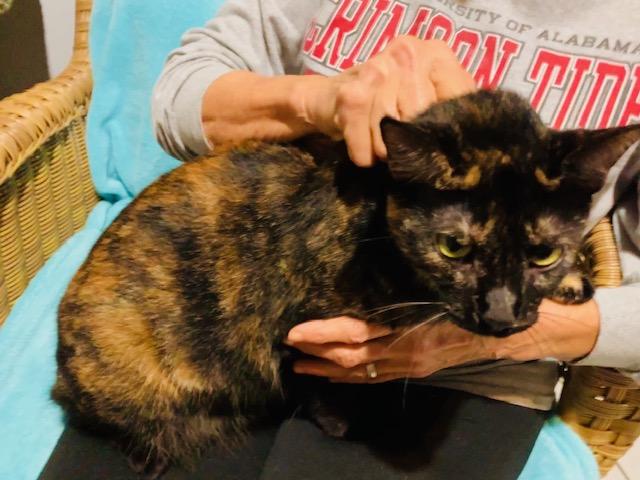So we found this article on scruffing a cat – or actually not scruffing a cat – by Denise LeBeau. It appeared on Catster and thought we’d pass it along
There’s an old saying, “Grab them by the scruff of the neck!”
To be honest, there are still some folks who believe that scruffing a cat is a proper feline-handling skill. There are much better and more humane ways to handle a cat. The experts agree that scruffing a cat is a terrible practice that shouldn’t be the “go-to” method for restraining any feline.

What is scruffing a cat?
Scruffing a cat is when one takes the skin on the back of a cat’s neck (called the scruff) into your hand and hold it. The skin is looser in that area. Some people wrongfully use the scruff as a handle. Dr. Kelly C. Ballantyne, Clinical Assistant Professor at the University of Illinois College of Veterinary Medicine, says “Scruffing may cause some cats to become immobile. That may allow veterinarians (and owners) to get things done without struggling with the cat, such as nail trims or medication administration.”
Another reason people continue to perpetuate this mistaken way of interacting with cats is because they think they’re mimicking what a mother cat does. “Cat owners may also be under the impression that scruffing is a natural way in which cats reprimand each other. That isn’t true,” Dr. Ballantyne says. “While mother cats carry their kittens by the scruff, this is to move them from one spot to another when they are very young and isn’t a form of discipline.”
“Scruffing can be uncomfortable as well as frightening,” Dr. Ballantyne says. “And while scruffing may temporarily immobilize some cats, it’s not effective for all cats. If the cat is frightened during the experience, he may change strategies in order to get out of the situation, such as by swatting, scratching or biting.”
How to restrain a cat without scruffing
There are many ways to safely restrain a cat that don’t involve scruffing. Dr. Margaret Gruen, PhD, Duke University, says, “There has been a lot of work around low-stress and fear-free handling of cats. Allowing them the use of at least one limb and providing distractions (like delicious foods) can be helpful when having to restrain cats. Most cats do well with a ‘less-is-more type’ of handling. Scruffing and stretching a cat only serves to make them have negative associations with the experience and become progressively worse. Scruffing is often done as a shortcut, but in the long run, it has costs for both the cat’s welfare and the owner’s willingness to bring their cats to the vet.”
Dr. Ballantyne recommends using a tool, like a towel. “Some of the most common options include allowing the cat to hide his or her head under a towel or blanket or gently wrapping the cat’s body in a towel. It’s important that the towel provides steady, even pressure, But not be so tight that it impairs the cat’s ability to breathe.”
While Dr. Ballantyne’s advice might sound technical, many already seen this technique in action. The social media meme featuring a “burrito cat” is actually a cat who is being restrained and obviously pleased with the process. Dr. Katherine Houpt, VMD, PhD, Diplomate – American College of Veterinary Behaviorists harkens it back to feeling safe. It’s like the Temple Grandin. Grandin observed that animals who were gently contained on all sides were comforted by the feeling. It’s like swaddling a baby, and there are products on the market today that do just that, like Thundershirts.
If you must restrain your cat — easy does it
Forcing a cat to do something he doesn’t want to do will most likely not end well. If you’ve got to restrain your cat, and you’re using the burrito method, stop doing it if his resistance escalates. Let him calm down. Then, try again after he’s settled. For routine procedures like medicating or nail trimming, waiting an hour or so can make the whole process go smoother. Whatever you do, scruffing a cat can make matters much worse.

